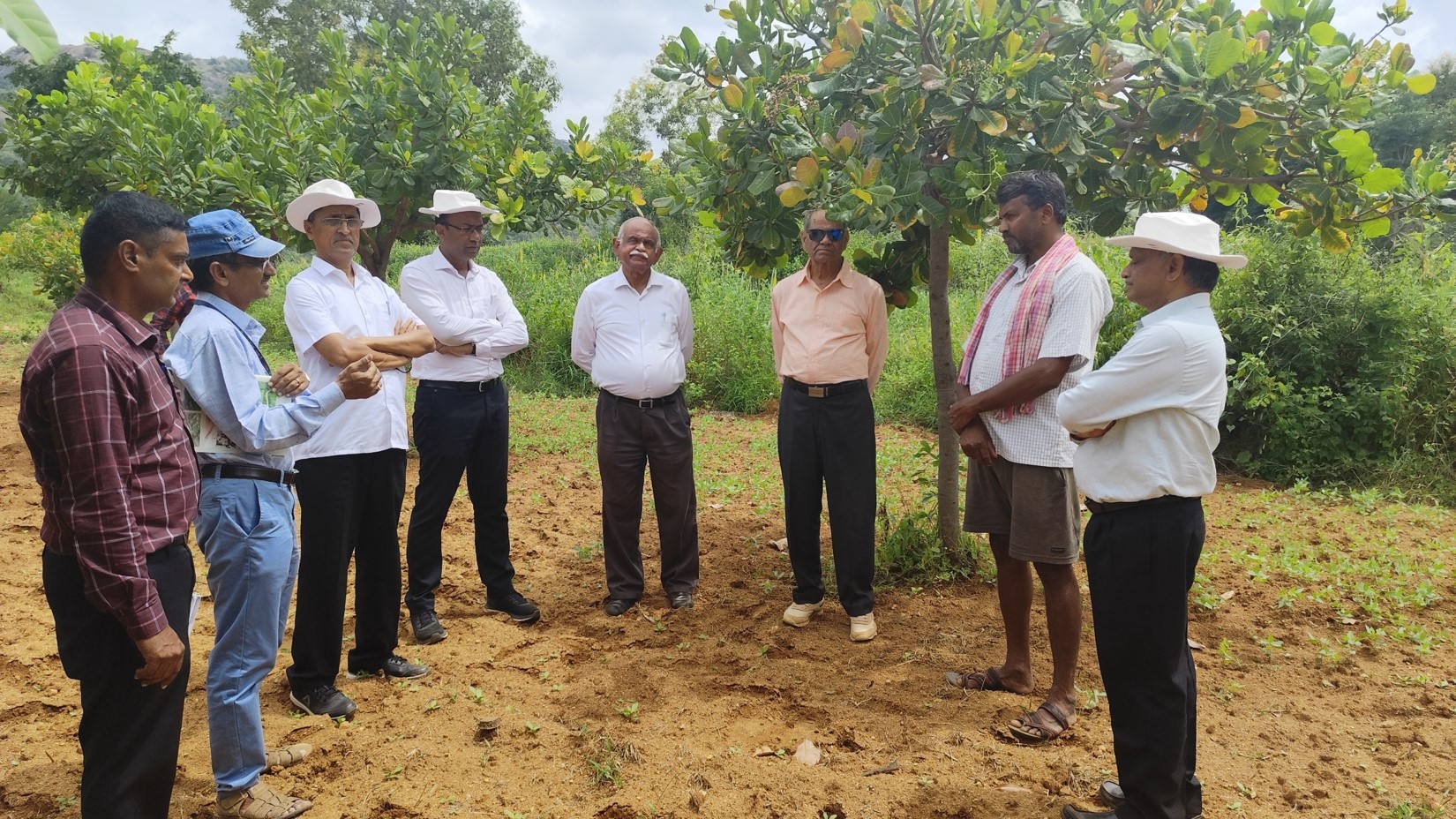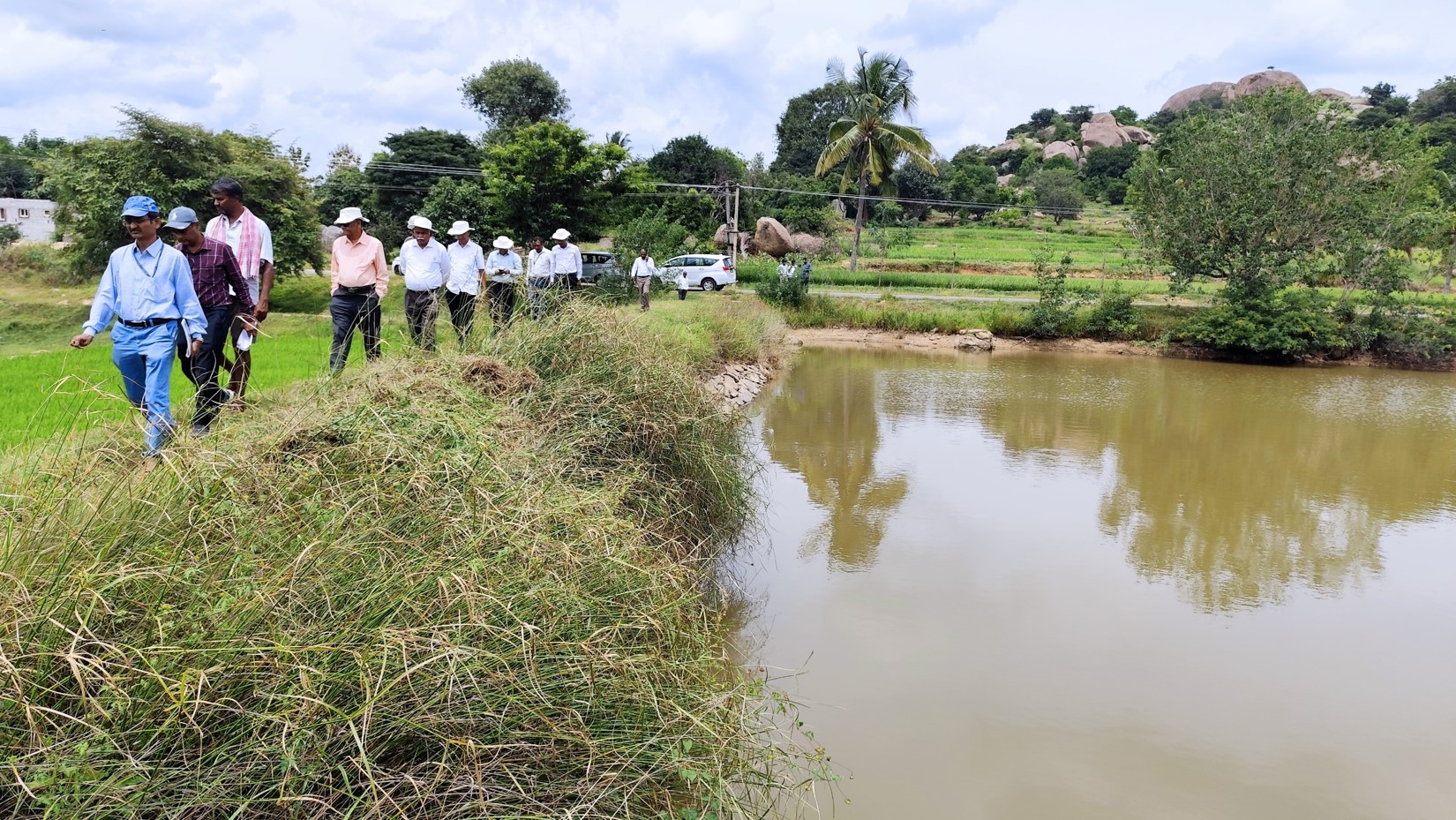
National Innovations in Climate Resilient Agriculture (NICRA)

In order to mitigate the climate vulnerability, a national level project was initiated by Indian Council of Agricultural Research (ICAR), by the name – National Innovations in Climate Resilient Agriculture’ (NICRA) in the year, 2010. Planning, coordination and monitoring of the programme at national level is the responsibility of ICAR-Central Research Institute for Dryland Horticulture CRIDA, Hyderabad. At district level, the selected KVK is responsible for implementing the project at village level through farmer’s participatory approach. Under this programme, the interventions were focused only to address climate related constraints for stabilizing the productivity and not general agriculture development.
Tumakuru is a district with high occurrence of drought with poor coping mechanism. As part of NICRA, several technologies were introduced at Durgada Nagenahalli village of Yelerampura gram panchayat in Tumakuru district, for minimizing the impact of dry spells and drought by leveraging the scientific techniques and application of science for enhancing the productivity of dryland farming systems and sustaining livelihoods. Later, Tanganahalli and Chikkadoddawadi villages of same gram panchayat were added.
The average annual rainfall of the district is about 697 mm. About 70% of the cultivation is under dry lands, as the irrigated area is only 30%. The resilient technologies were prioritized in consultation with the farmers. Similarly the appropriate locations for water harvesting systems such as check dam, farm ponds, percolation tanks, etc. were identified and demonstrated.
Identification of appropriate coping practices and technologies relevant to address specific climatic vulnerabilities was accomplished through interactions with farmers in selected villages by KVKs based on participatory rural appraisal (PRA) and focused group discussions (FGDs). The National Agricultural Research System (NARS) comprising of ICAR and State Agricultural Universities (SAUs) served as the source of proven technologies along with the indigenous technical knowledge (ITK) of participating farmers.
Farmer Sri Manjunath had cultivated Groundnut in his 1 ha farm. The yield of Redgram with Ridges and furrowswas 5.8 qt/ha, compared to that of Redgram without Ridges and furrows(4.3 qt/ha). The farmer benefitted with an additional income of Rs. 7,600/- (Table 2).
The technologies of water conservation and management implemented in the NICRA villages are as follows: New farm ponds, Check dams, Water storage structures, Desilting and widening of catchment channels, Fixing the leakage of community tank, Desilting and widening of defunct farm ponds, Desilting and widening of check dams. Considering the importance of harvesting water for critical irrigation for saving crop during drought in the villages, 108 farm ponds have been created. The total rainwater storage capacity of the 108 farm ponds dug during the project implementation is 30,950 Cu m and it has benefited over 119 farmers. The total water storage capacity of the newly constructed 5 check dams is 6,750 Cu m and has benefited 11 farmers. The total rainwater storage capacity of the 13 percolation ponds for underground recharge is 1,750 Cu m and has benefited over 13 farmers. The total water storage capacity of the 18 rejuvenated farm ponds is 8,230 Cu m benefited 23 farmers. The total water storage capacity of the 11 rejuvenated check dams is 11,210 Cu m and benefited 20 farmers. The total rainwater storage capacity of the 3 rejuvenated community tanks is 5,500 Cu m and has benefited 12 farmers. The total water storage capacity of the renovation of community tanks is 3,68,040 Cu m and benefited 63 farmers. The overall water storage capacity of water harvesting structures is 4,28,890Cu m. Seventeen out of 32 open wells and 11 out of 29 bore wells were recharged due to water harvesting structures. The water storage capacity of the various water harvesting structures is shown in the table below (Table). Around 92.5 ha additional area was brought under protective irrigation by utilizing harvested water from these structures. Efforts were made to provide access to water for as many households as possible by way of convergence with the ongoing developmental programmes being taken up in the villages. About 221 households got access to water, thus farmers in the NICRA can now save the crops during the dry spells by way of critical irrigation and can enhance area under cropping during good rainfall years during Rabi with harvested water, thus stabilized productivity during drought years and enhanced income by way of cropping intensification during normal years.

